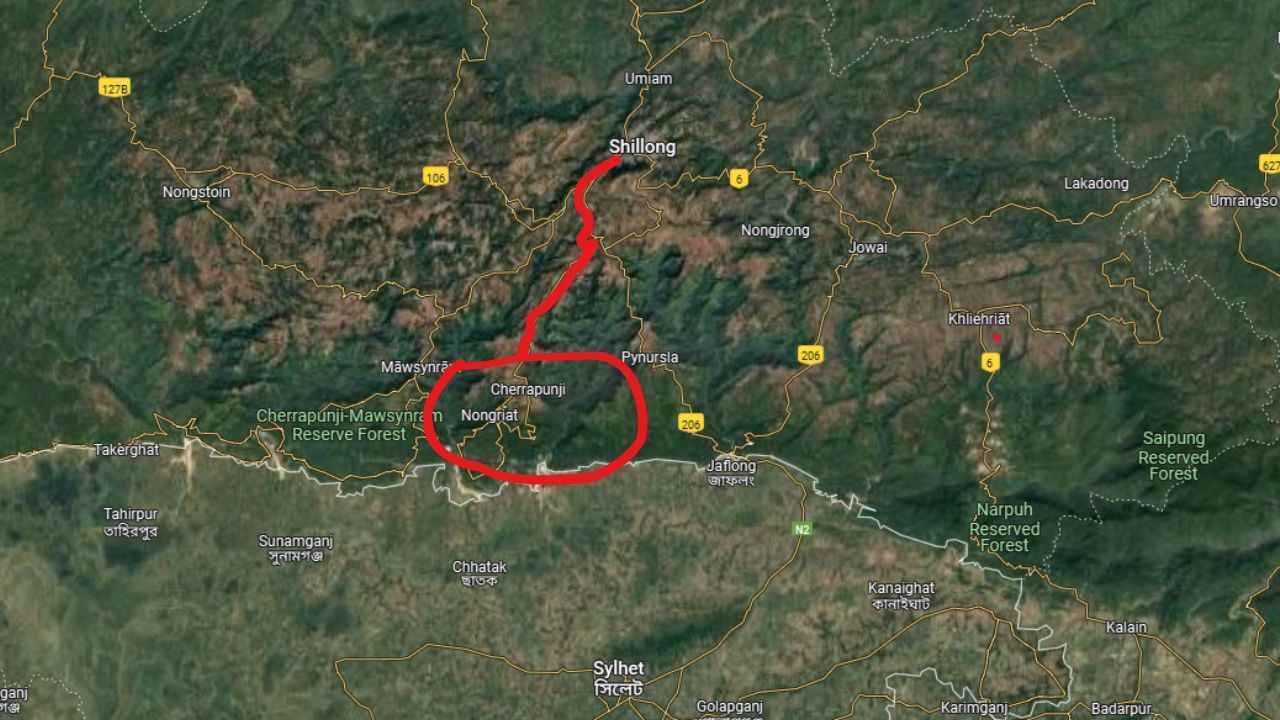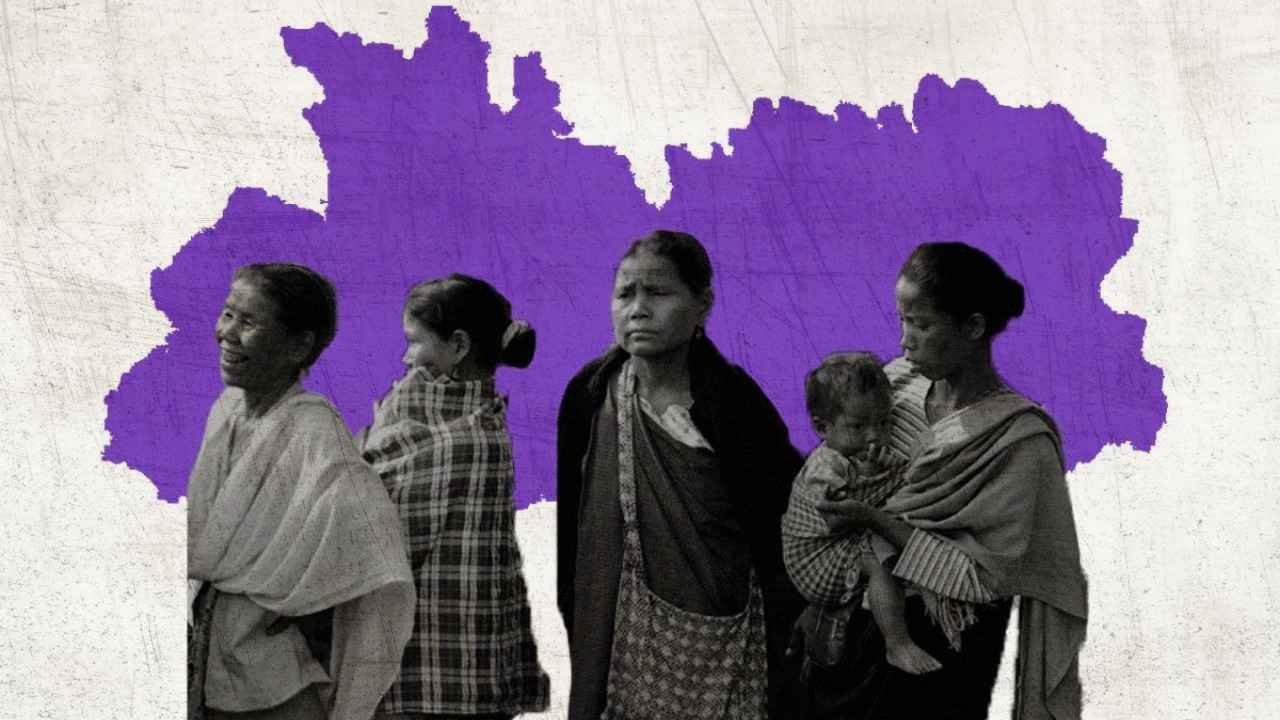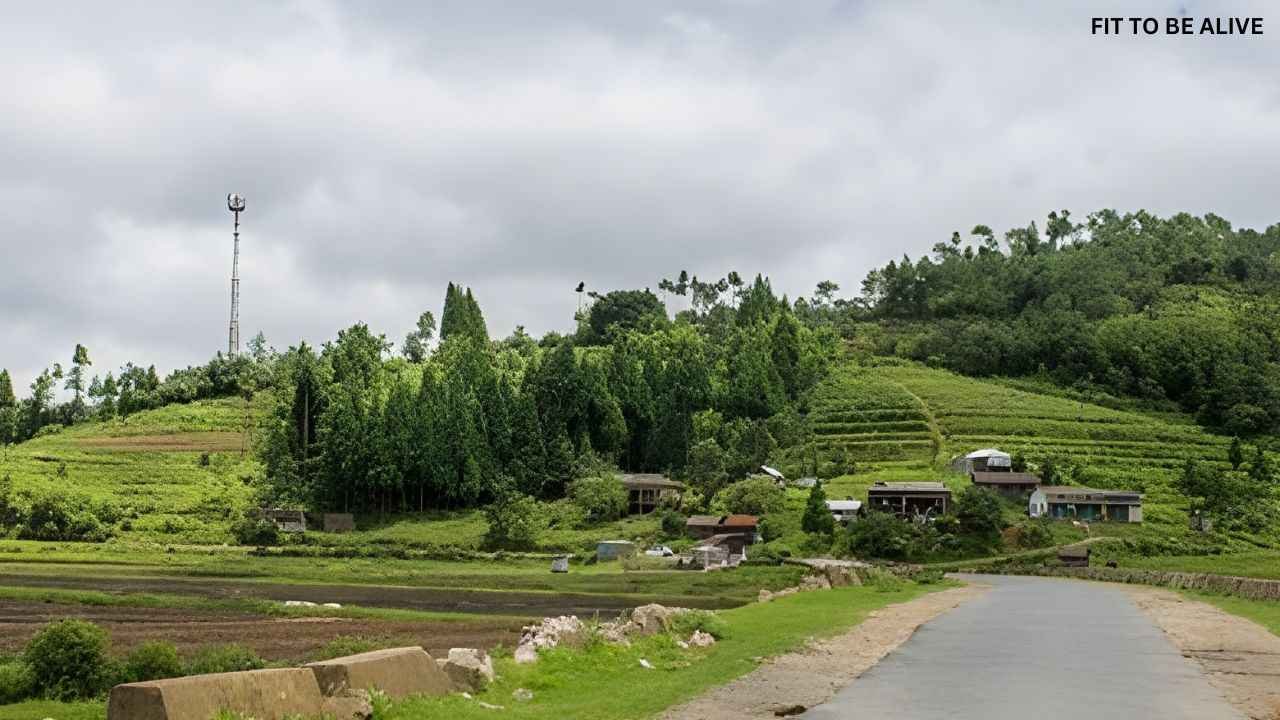Place Where Water is Your Daily Friend

The Wettest Place on the Earth, Mawsynram, Cherrapunji
The Wettest Place on the Earth, Mawsynram, Cherrapunji, located in northeastern India, is one of the most unique places to visit. It is the wettest place on the planet Earth with an average annual rainfall of 11,872 millimeters (467.4 in). But beyond its weather, Cherrapunji is a land of fascinating geography, diverse ecosystems, and cultural history.
The original name for this town was Sohra (soh-ra), which was pronounced “Cherra” by the British. This name eventually evolved into a temporary name, Cherrapunji, meaning ‘land of oranges’.
Geography and Climate of Cherrapunji

Cherrapunji, located about 55.3 km from the state capital, and considered the wettest place on the Earth. Shillong sits on the southern slopes of the Khasi Hills. The town’s geography is picturized by lush rolling hills, deep valleys, magnificent waterfalls, caves, and rock formations.
One of Cherrapunji’s most significant features is its rainfall because in this place the rain is a permanent thing and happens almost every day. This extraordinary amount of rainfall is largely due to its location in the path of the southwest monsoon winds.
People can experience intense rain between June and September, during the monsoon season, when Cherrapunji experiences its peak rainfall. Best Experience.
Natural Beauty of The Rainiest Place on Earth

Over the period rain and nature have sculpted the land according to itself eventually creating some breathtaking natural attractions in the world. The waterfall that stands out as the biggest attraction is the Nohkalikai Falls is one of the tallest waterfalls in the country, with a breathtaking height of 1,115 feet (340 meters).
The water plunges into a pool at the base, which often takes on a striking turquoise hue due to the natural minerals in the water.
Some of the other popular waterfalls in Mawsynram, Cherrapunji are Dainthlen Falls (height – around 80 meters), Wei Sawdong Falls (height around 45-60 meters), Seven Sisters Falls also known as Nohsngithiang Falls or Mawsmai Falls (height 315 meters), etc.
Because of the region’s cool temperature and climate Cherrapunji is blessed with very unique flora and fauna. The area is covered by dense tropical forests that are home to various species of plants, trees, and flowers.
The Khasi pine, oak, and rhododendron trees are common in the area, as are several species of ferns and orchids. The region is known for its biodiversity and is part of the Indo-Burma biodiversity hotspot.
Culture of The Wettest Place on Earth: Cherrapunji

The people of Cherrapunji are predominantly of Khasi origin, which is one of the major indigenous communities of Meghalaya. Their language, Khasi, belongs to the Austroasiatic language family and is widely spoken across the state of Meghalaya.
The Khasis are known for their rich cultural heritage. They have a matrilineal society, where lineage and inheritance pass through the mother, and the family name is derived from the mother’s side. people practice a mix of traditional religion and Christianity, as many of them converted to Christianity during the colonial period. Festivals such as “Shad Suk Mynsiem” and “Ka Shad Nongkrem” are important cultural events, where traditional dances and songs are performed, and offerings are made to the local deities.
Cherrapunji’s economy is mainly driven by agriculture, tourism, and small-scale industries. Farming is a primary source of income as the soil is very fertile, with crops like rice, vegetables, and fruits being grown.
The fertile land also supports the cultivation of betel leaves, ginger, and turmeric. Due to its scenic beauty, waterfalls, caves, and heavy rainfall, Cherrapunji attracts many tourists.
The Challenges of Climate Change

In recent years, Cherrapunji, like many other places around the world, has faced challenges due to climate change. Specifically, the region has experienced noticeable changes in its climate, with less predictable rainfall patterns.
Consequently, these changes are linked to global climate change, which disrupts the monsoon cycle. As a result, this shift has had significant implications for agriculture, which is the lifeblood of the local community. Irregular rain has made it harder for farmers to plant their crops.
However, to combat this challenge, local communities and environmental organizations have begun to take proactive steps to mitigate the effects of climate change.
The Living Root Bridges of Cherrapunji

One of the most unique and fascinating features of Cherrapunji is its living root bridges. These natural marvels are made by the indigenous Khasi tribe, who guide the growth of tree roots into structures that serve as bridges over rivers and streams. The roots are carefully trained over decades, creating sturdy, eco-friendly pathways.
Visiting these bridges offers a glimpse into the harmony between nature and human ingenuity, making it a must-see attraction for travelers seeking a blend of cultural heritage and natural beauty.
Cherrapunji: A Trekker's Paradise

Cherrapunji is a haven for trekkers and adventure enthusiasts, offering some of the most scenic trails in India. The region’s rugged terrain, lush green valleys, and cool misty climate provide the perfect backdrop for an unforgettable trekking experience.
Popular treks like the Double Decker Living Root Bridge and the trek to Nohkalikai Falls lead adventurers through dense forests and across intricate landscapes, giving them the chance to witness the raw beauty of nature up close.
Pingback: Best Museums to Visit in Meghalaya | Let's Know About Them
Pingback: The Botanical Beauty of Meghalaya